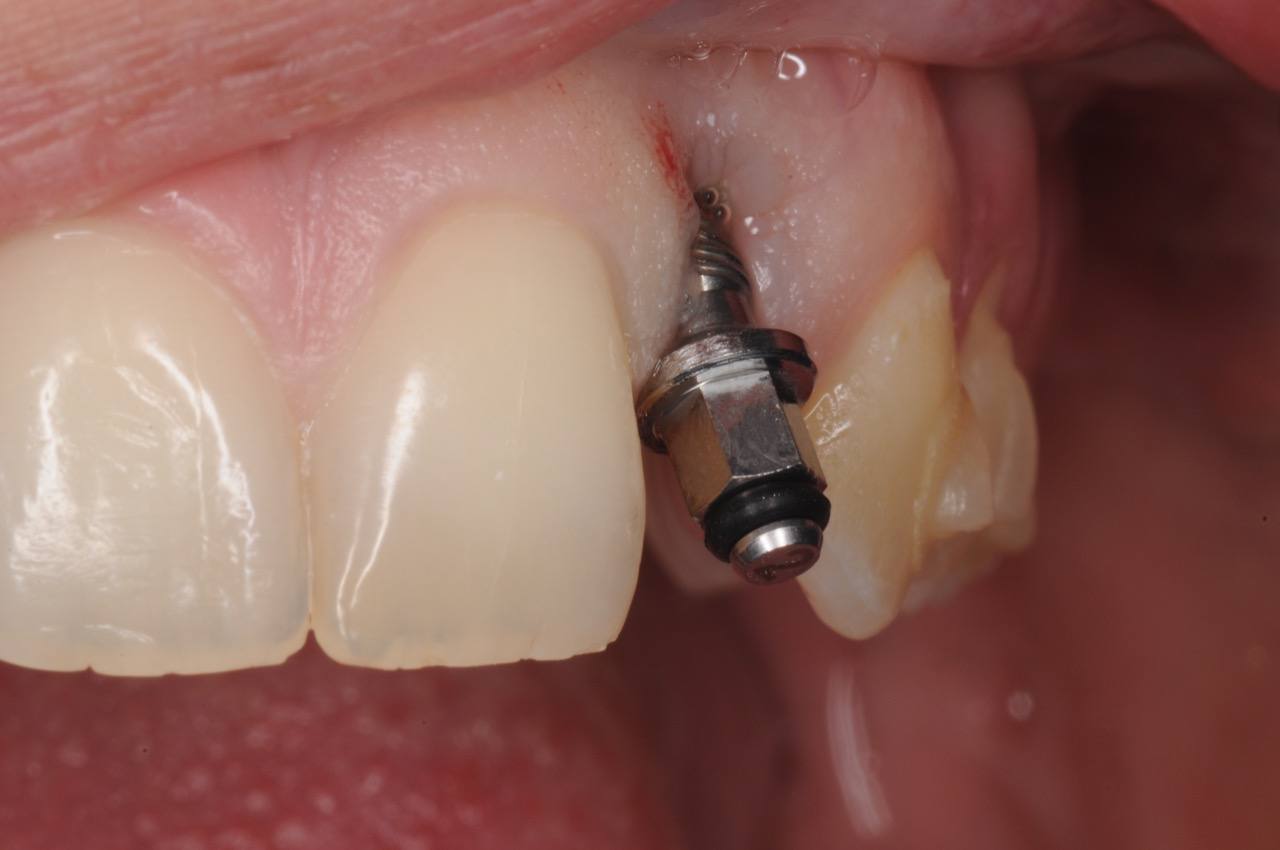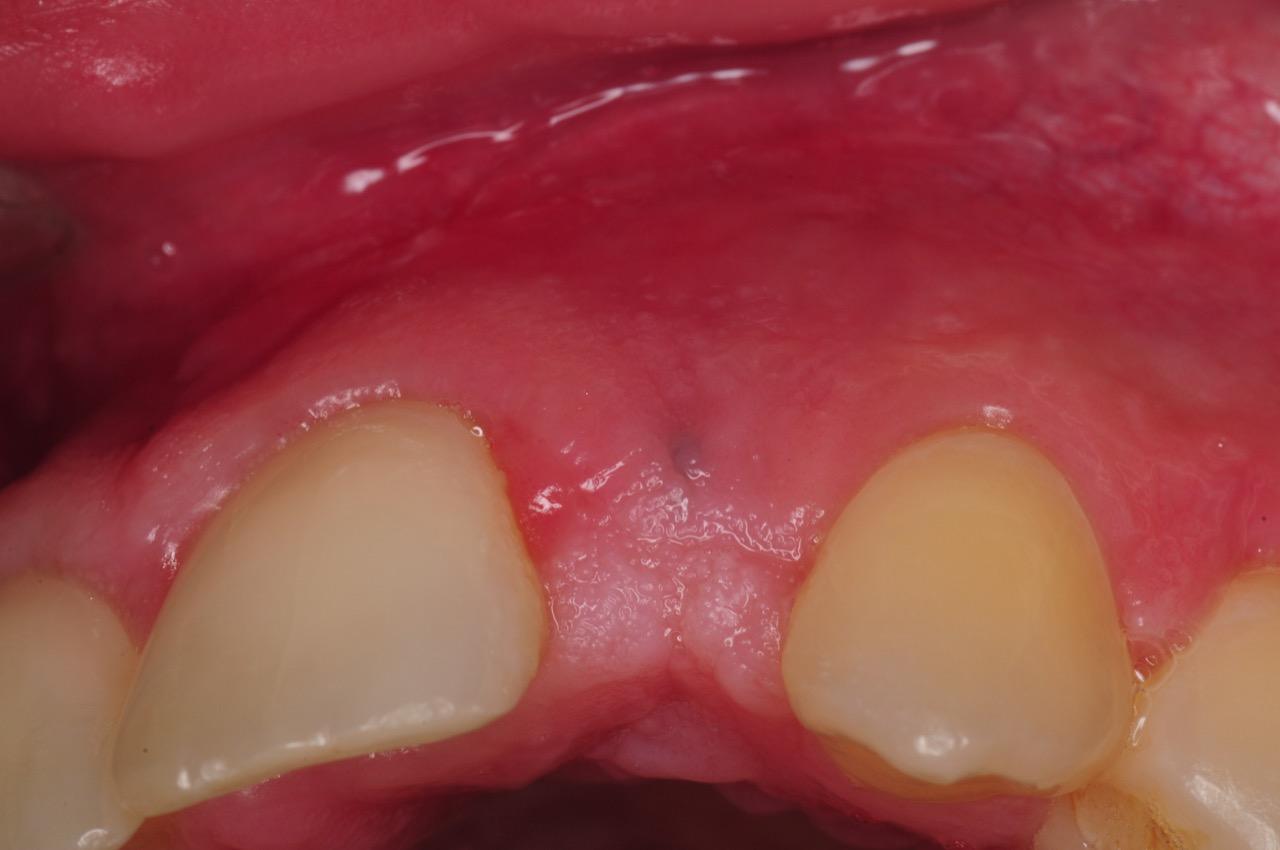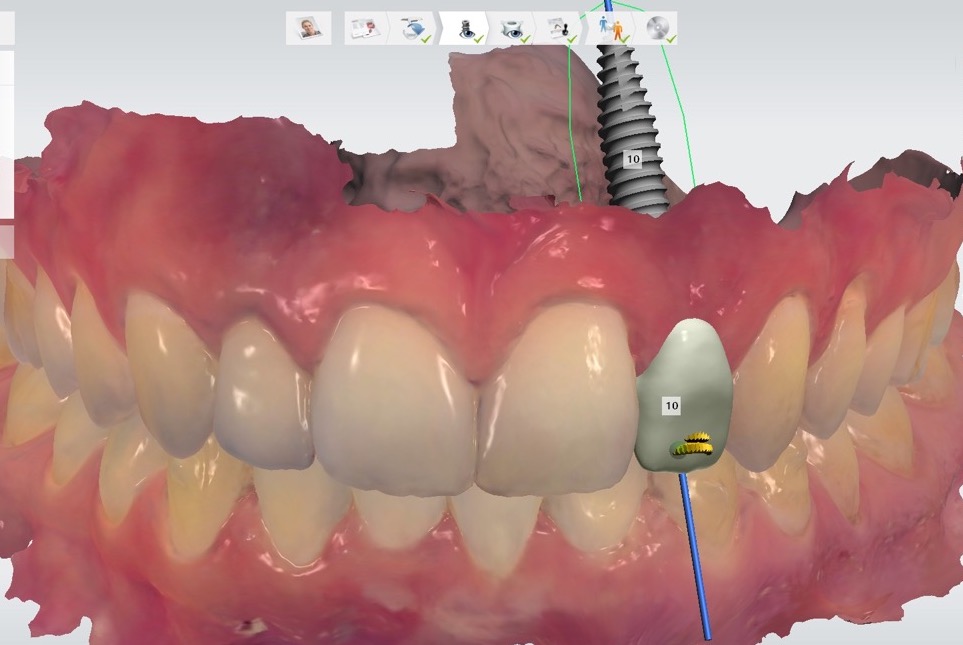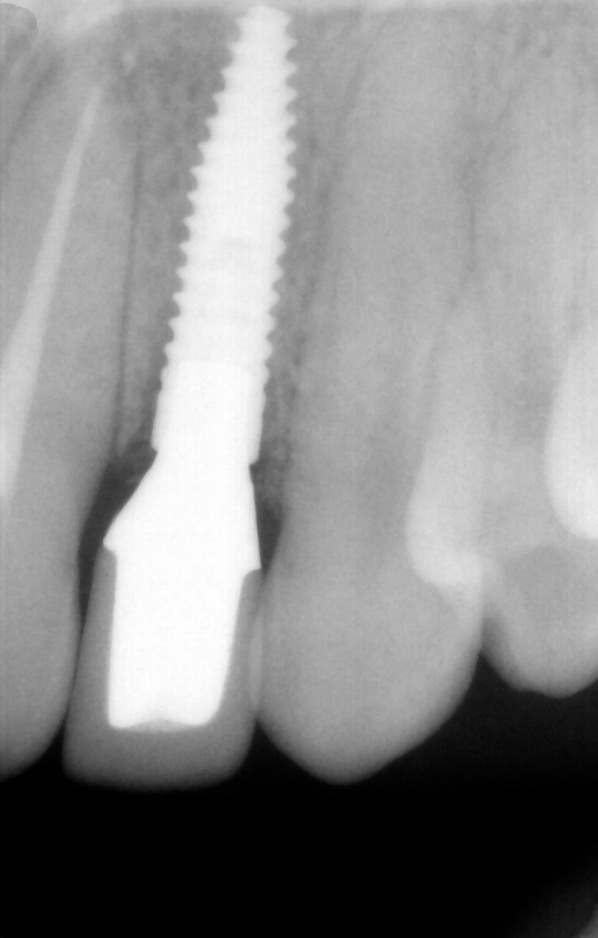The Story:
This patient came for consultation regarding her existing dental implant placed several years ago with significant gum recession. She was quite unhappy with the dark area around the crown as well as its long appearance. She had a relatively high smile with quite visible upper front teeth compromised by the poor aesthetics of the existing implant.
Upon digital diagnostics, it was discovered that the implant was placed in excessive angle hence causing the significant tissue loss. The only option was to remove the implant, restore bone and gum tissue and replace with a new implant in proper position.
Treatment
The first step was atruamtic removal of the implant using reverse torque explantation technique. With this approach, the implant is removed in a non-invasive technique. Then the gum tissue was allowed to heal naturally and regenerate itself in 2 months.
Orthodontic treatment was initiated next to help align upper teeth and establish a more balanced space in site of the missing tooth.
The next step was digital diagnostics (CBCT and optical scan) and computer-assisted planning to help position the implant properly. A surgical guide was printed based on this work up and used during surgery for precise placement.
The dental implant was placed using the surgical guide. Due to thin bone biotype (over the missing tooth and the adjacent teeth), guided bone regeneration technique was done to augment bony horizontally to increase thickness of bone covering implant and adjacent teeth.
After a 6 month healing period, the implant was uncovered with modified gum tissue release design to increase thickness of gum tissue using the connective tissue in the palatal part. The implant was then restored with a provisional restoration acting as the prototype. After 3 months of healing, the final restoration was designed and placed.
The keys to achieving this type of result were:
- atraumatic explantation (implant removal)
- Digital diagnostics and planning for proper implant placement
- Restoration of adequate bone and gum tissue over the implant and adjacent teeth.
- A carefully fabricated provisional restoration (prototype) and final restoration
- Team approach to treatment (oral surgeon, prosthodontist, orthodontist)

Thanks to Dr. Keith Progebin (prosthodontist) and Dr. Jill Baily (orthodontist) for their collaboration on this team approach to treating this patient.





















